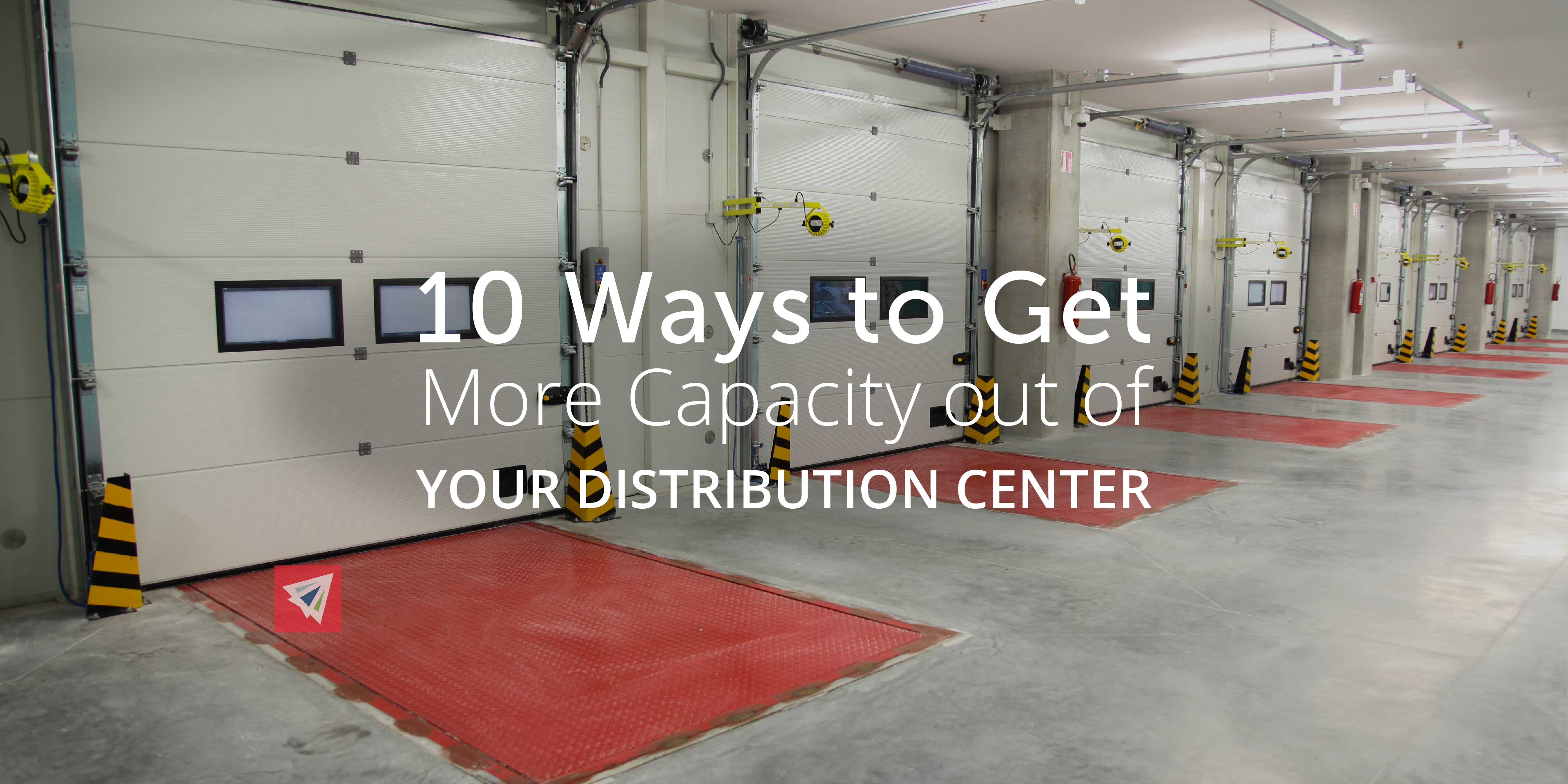Everyone knows that product demand is higher than ever these days. As manufacturers are pushing to produce more goods, and new consumer purchasing platforms are continually under development, the bottleneck in the capacity crunch often falls on distribution centers. Often, the main concern is not over expense mitigation or getting thruput – it’s over controlling and staying up with demand. Here are 10 ways to get more capacity out of your distribution center in times of high demand.
10 Ways to Get More Capacity Out of Your Distribution Center
1. Creating Organized Product Blocks in Your Warehouse
These can also be referred to as “internal warehouses”. Essentially, grouping products that are ordered at a similar pace or regularity can help improve floor and ordering/stocking efficiency. Placing product closer together which stockout frequently makes it abundantly clear which ones need to be ordered. It also cleans up the hassle of running back and forth across the warehouse to grab products that you know full well will be ordered on a frequent basis.
2. Sell Storage Equipment
We understand that it’s smart to keep some storage equipment around, but facility and warehouse managers can all-to-often “hoard” storage equipment. You could be wasting a lot of storage space by keeping tools around that are broken or outdated and replaced. Chances are you’ll waste more money on keeping them stored than the off-chance you’ll need to buy them back at some point in the future. But this all depends on how certain you are you will need them at a later time.
3. Place “Most-Ordered” Product in Picking Zones
This should be a given, but warehouses often get organized before sales start. If you should find that your most frequently sold products are pushed towards the back, or are placed in any areas that present inconvenience, a re-stationing of such goods should be made. We recommend placing products that are hot sellers towards picking areas and zones for easy access and shipping.
4. Implement Automation Wherever Possible
Automated inbound and outbound transportation solutions are on the rise quickly these days. Usually the term “automation” scares people a way, as the assumption is that the entire warehouse must be automated simultaneously. However, you can start small by implementing software or small machinery that automates tasks such as packaging, ordering, invoicing, picking, loading, or stocking. Talk to competitors or freight forwarders who have experience with such warehouses to get initial ideas.
5. Improve Training
If employee performance is one of your issues, it may boil down to improper training. There are plenty of consulting firms that are happy to lend a hand in creating appropriate training material to improve your distribution center’s performance. Even though your training process may be well explained, materials such as employee training books/pamphlets/online reference content/etc. can all be created in high quality by consulting firms.
6. Easily Reduce Your Lighting Electric Bill
Distribution centers need lighting only in areas where movement is happening – as is the case with most transportation related buildings. But most companies are forking out a big electric bill because they leave their distribution center lit up all day long (and sometimes all night.) You can easily reduce your electric bill by implementing motion-activated lights. They will only light up certain areas when necessary, but will otherwise shut off and put a halt on your electric costs in the meantime.
7. Adding Space to Your Facility for Cheap
Adding space can get expensive really quick – especially if your first resort is to buy/purchase another warehouse. However, you have a few options when it comes to maximizing the space of your current distribution center. Many people think the cheapest method is to expand the facility horizontally, however, there are many contractors who are able to raise the roof of your facility and give you more overhead space. Call around and see what deals are on the market.
8. Managing Slotting for Orders
If you want more analytics and insights into what products are selling quickly, how much they’re selling for, and what you should order, reorganizing your slots is a good practice. Also, reorganizing slots may be a nice stepping stone to prepare for automating your inbound and outbound transportation systems.
9. Reduce Crowded Spaces
Too many cooks in the kitchen? More workers doesn’t necessarily mean more efficiency. In fact, many distribution centers overstaff their workers and crowd them in places that need more efficiency, and overstaffing causes crunches and slowed operations.
10 . Reduce Touchpoints, Reduce Damage
Make it a priority to touch the goods in your warehouse as few times as possible. Product damage is more likely to occur the more times it is handled. After all, this is one of the primary reasons people prefer FTL over LTL shipping.
Conclusion
We could probably talk your ear off with more recommendations for how to get more capacity out of your distribution center, but every item on this list is a good place to start. Implementing new automation technology and clearing up warehouse space/storage is not as difficult or expensive as it may seem. If you need any further recommendations or would like to just pick our brain for ideas, give one of our Interlog USA team members a call and we’d be happy to help you and your company out!
